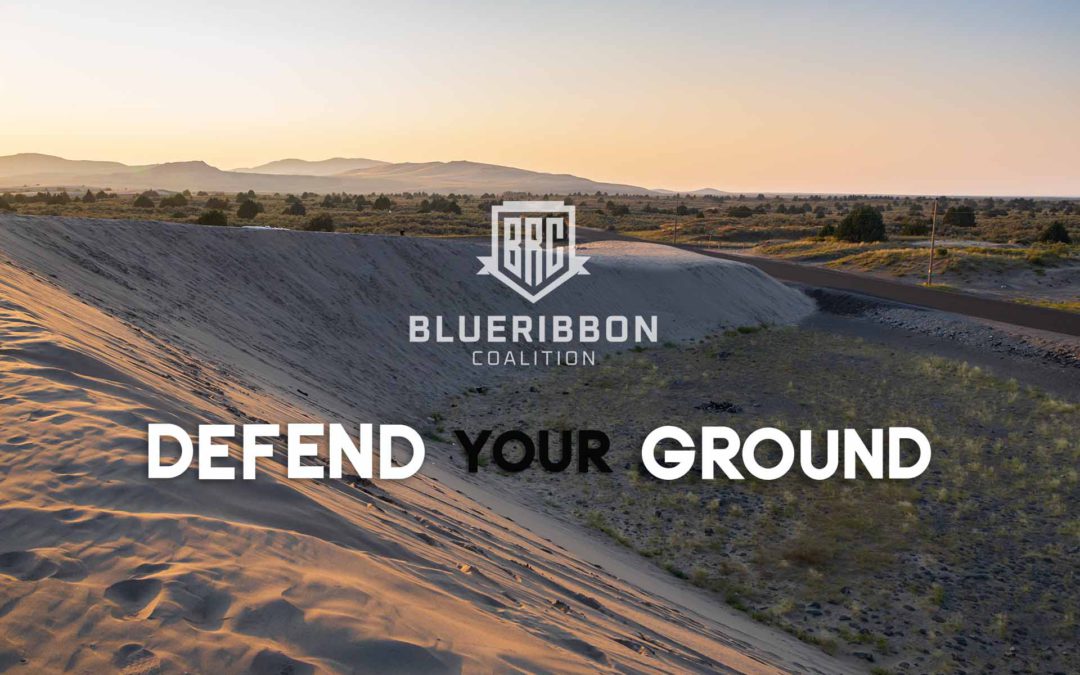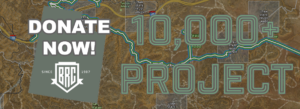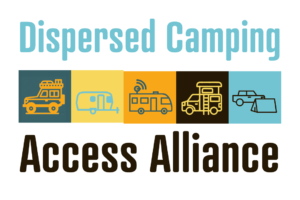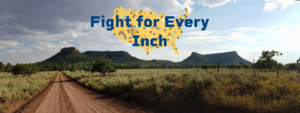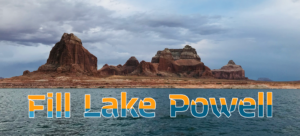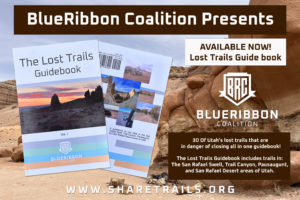UPDATE: The comment period has been extended through July 10, 2023. Please use the tool at the bottom of the page to submit your comment to the BLM today.
The largest field office in Idaho, the Upper Snake Field Office on the east side of Idaho, managed by the BLM is starting the Travel Management Process in which could closure numerous routes to motorized users. Scoping and route inventory was held in 2016. The BLM is accepting public comment on the draft environmental assessment which proposed three alternatives to the current management.
The BLM has inventoried 761.2 miles, of current routes within 126,378 acres. The project area hosts approximately 20% of Idaho’s population. Economic impacts need to be greatly considered when making these decisions. “In FY 2021, authorized recreation and grazing contributed approximately $188,200,000 to Idaho’s economy.”
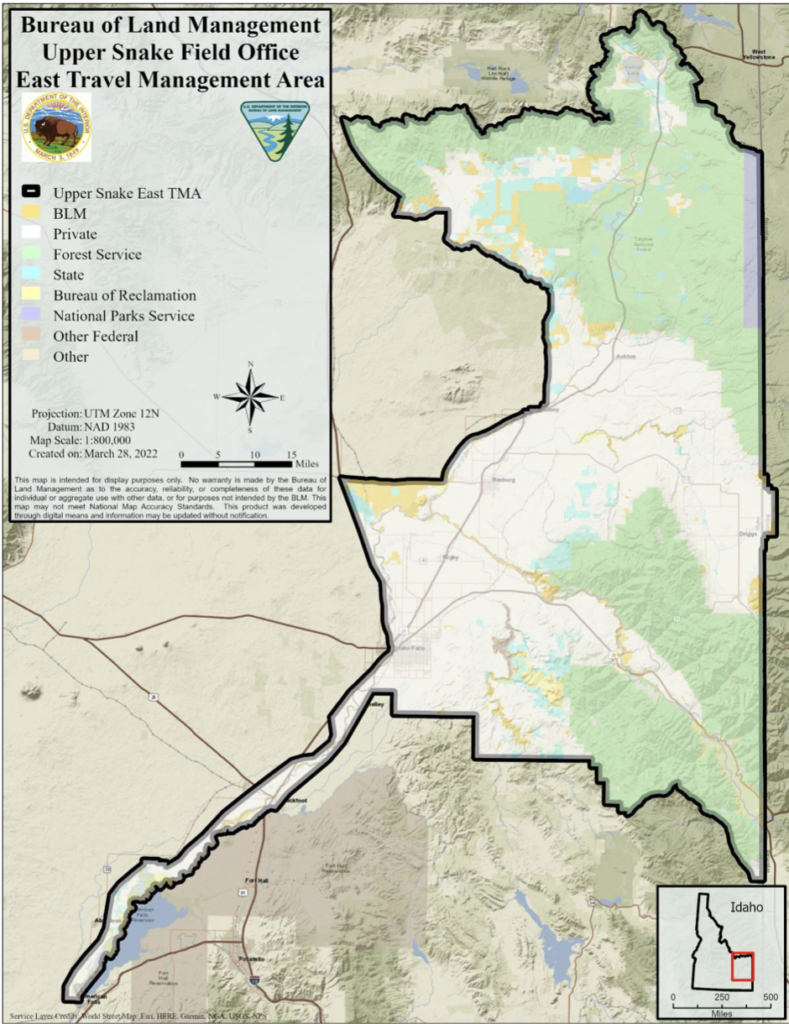
Alternative C proposes human closure areas on over 8,000 acres in the winters. There are also areas that would restrict motorized and non-motorized use throughout the winters including activities that are often considered “low impact” such as snowshoeing unless on a designated route.
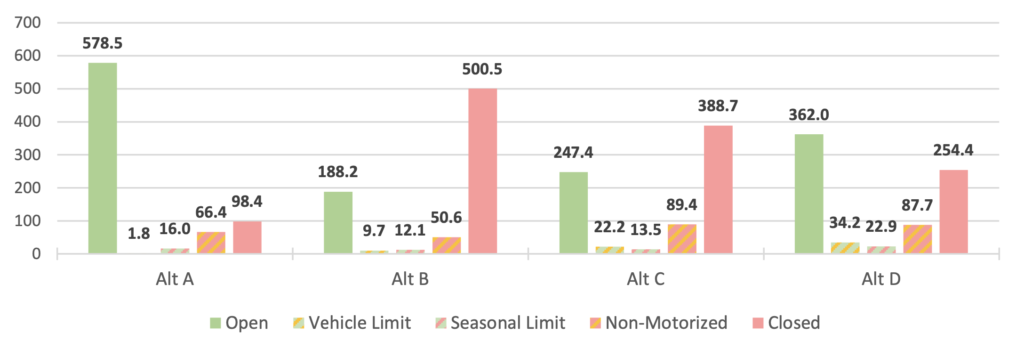
All alternatives are unacceptable and close too many miles. Alternative D which is the “recreation friendly” alternative still closes 254.4 miles of routes. There is a potential to only keep 78 miles of routes open year round if Alternative B is selected.
With all alternatives there is substantially more non-motorized route construction proposed than motorized. Data from the Bureau of Economic Analysis indicates that motorized outdoor recreation has grown more than non-motorized recreation on public lands. At a minimum, the BLM should analyze and consider the same amount of motorized new construction routes as non-motorized if not more. The EA notes, “Year-round OHV and non-motorized recreation is expected to increase in and around the TMA independent of the network alternative selected for the TMP”, and “It is highly likely that recreation visitor numbers in the TMA would continue to increase in the future.”
The BLM is considering how the designated travel route network would impact other authorized uses (e.g., livestock grazing, geology/minerals, energy production, rights-of-ways), how to avoid habitat loss, fragmentation and degradation from roads and claim that route density is negatively impacting wildlife. Much of the proposed closures and restrictions are due to OHV use having negative impact on plants, wildlife and habitat however, these habitats and species have survived for decades with OHV use. BLM is required to use best available science and animals and plants are being weaponized against the motorized community when you cannot prove that having an open OHV route is causing a species to go extinct. Yellowstone National Park ended a big game wildlife study early because they showed that motorized use had no significant impact on the big game within the habitat. This should be considered when making these travel management decisions.
The plan also includes this problematic statement: “A travel network that closes and reclaims more routes to year-round OHV use would provide for higher quality recreation experiences for non-motorized users than a network that designates more routes as open to OHV use.” The BLM should be considering how to provide higher quality recreation for ALL users and not just non-motorized users.
It is also important to note that although the BLM is undergoing this travel management process, over 80% of the land within the project area is either USFS land or privately owned. If not carefully considered, route closures in this land could lead to loss of access to USFS land and/or private land.

